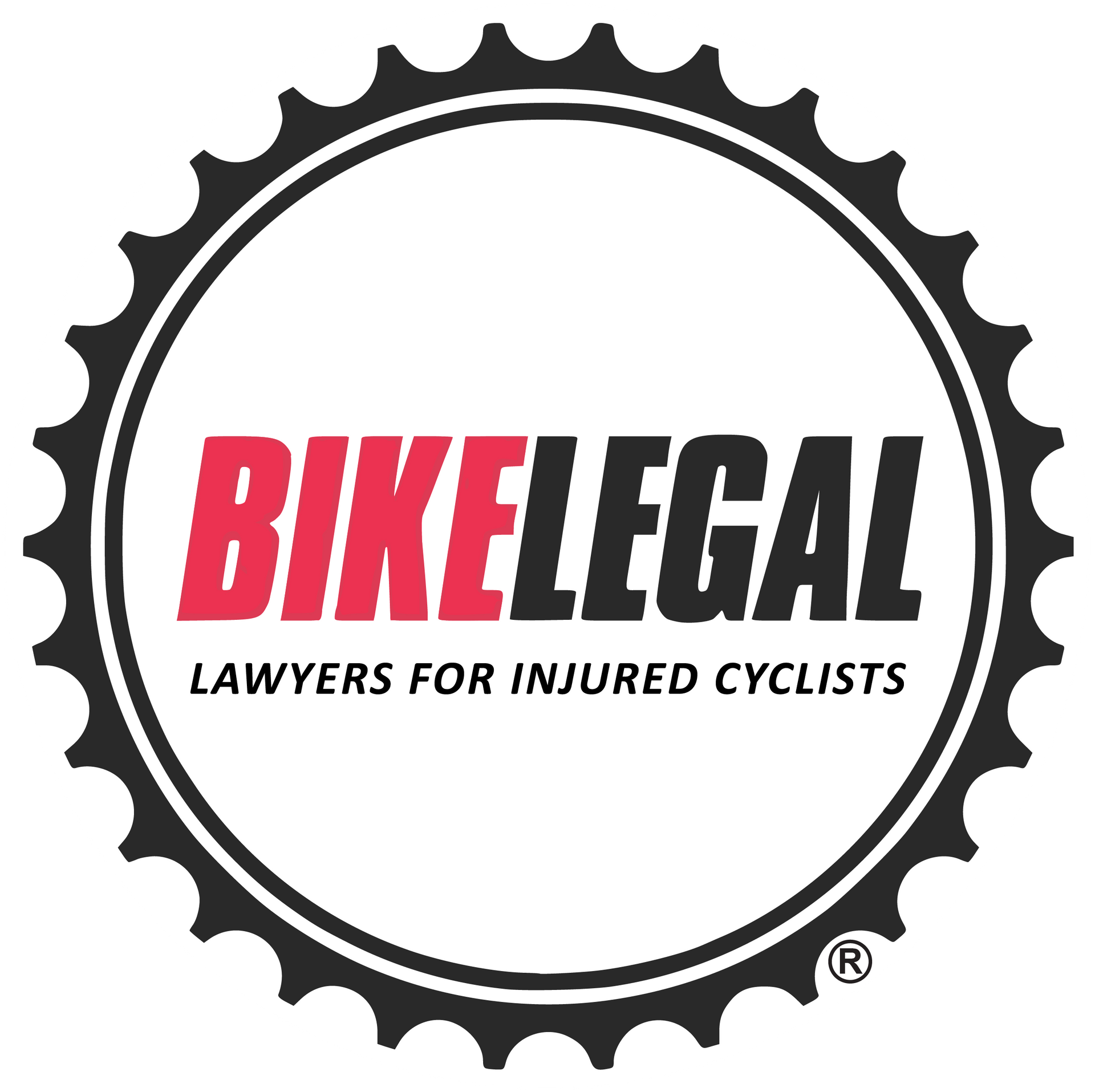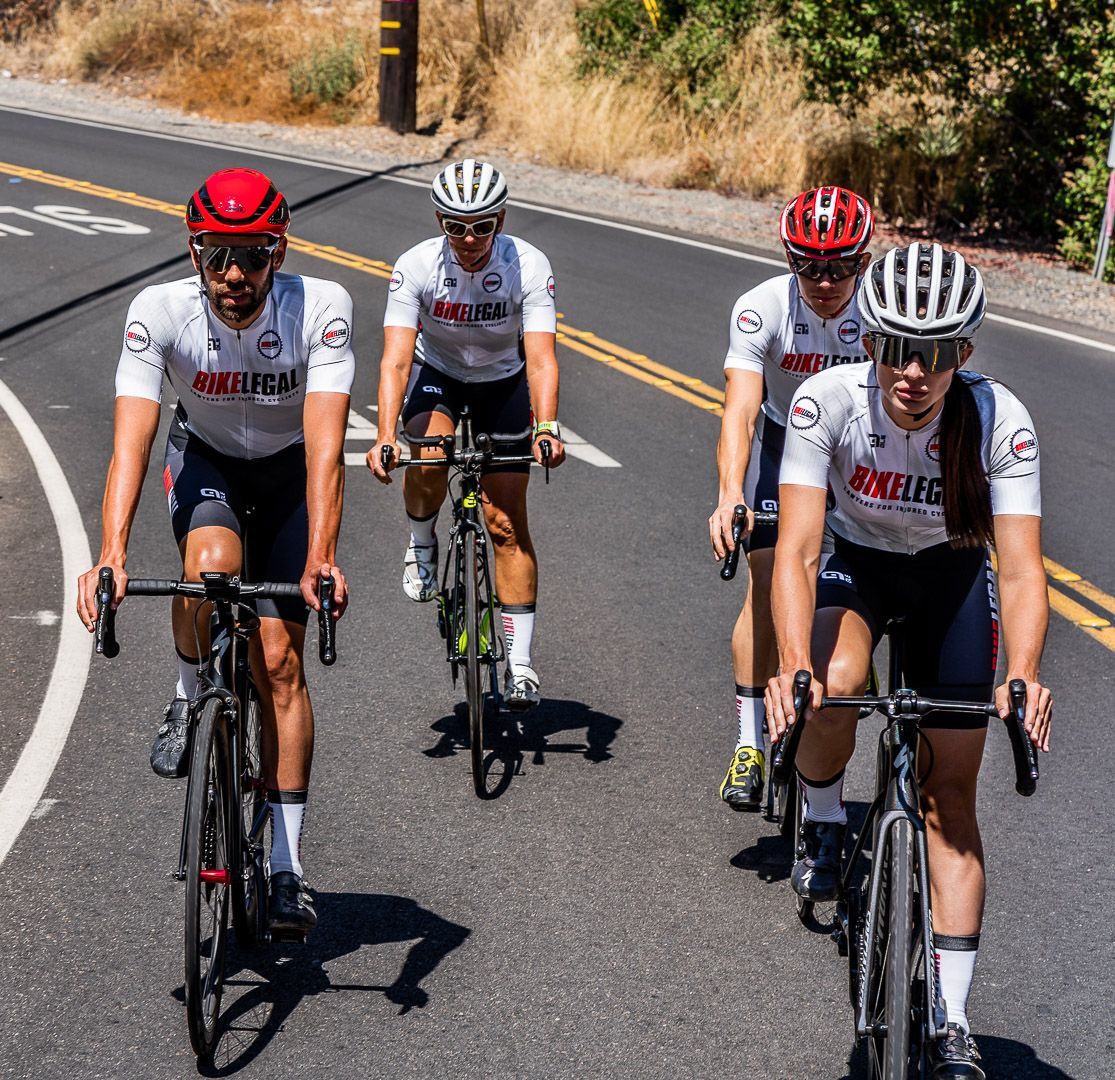Bicycle Crashes Due to Unsafe Road Conditions
Follow us on
social media!
Bicycle Crashes Due to Unsafe Road Conditions
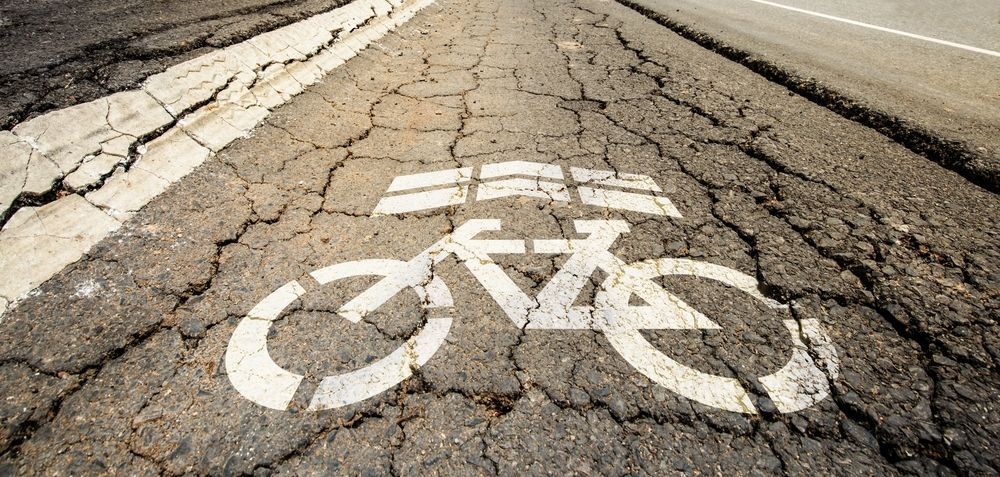
Bicycle crashes due to unsafe road conditions are a significant concern for cyclists. These accidents, often preventable, stem from a variety of hazardous circumstances ranging from potholes and wet surfaces to unexpected debris and poor lighting.
This article explores the most common unsafe road conditions that pose threats to cyclists, discusses their impact on safety, and offers insights into preventive measures that can enhance the cycling experience and reduce the incidence of crashes. By understanding and addressing these risks, both cyclists and road authorities can work towards safer roads for everyone
- Cycling Safety and the increasing number of bicycle accidents
- Examples of unsafe road conditions for cyclists
- Practical tips on how to stay safe and avoid accidents
- Legal considerations and advice for cyclists involved in accidents
- Recent trends and updates related to bicycle accidents on dangerous roads
What classifies an "unsafe road"?
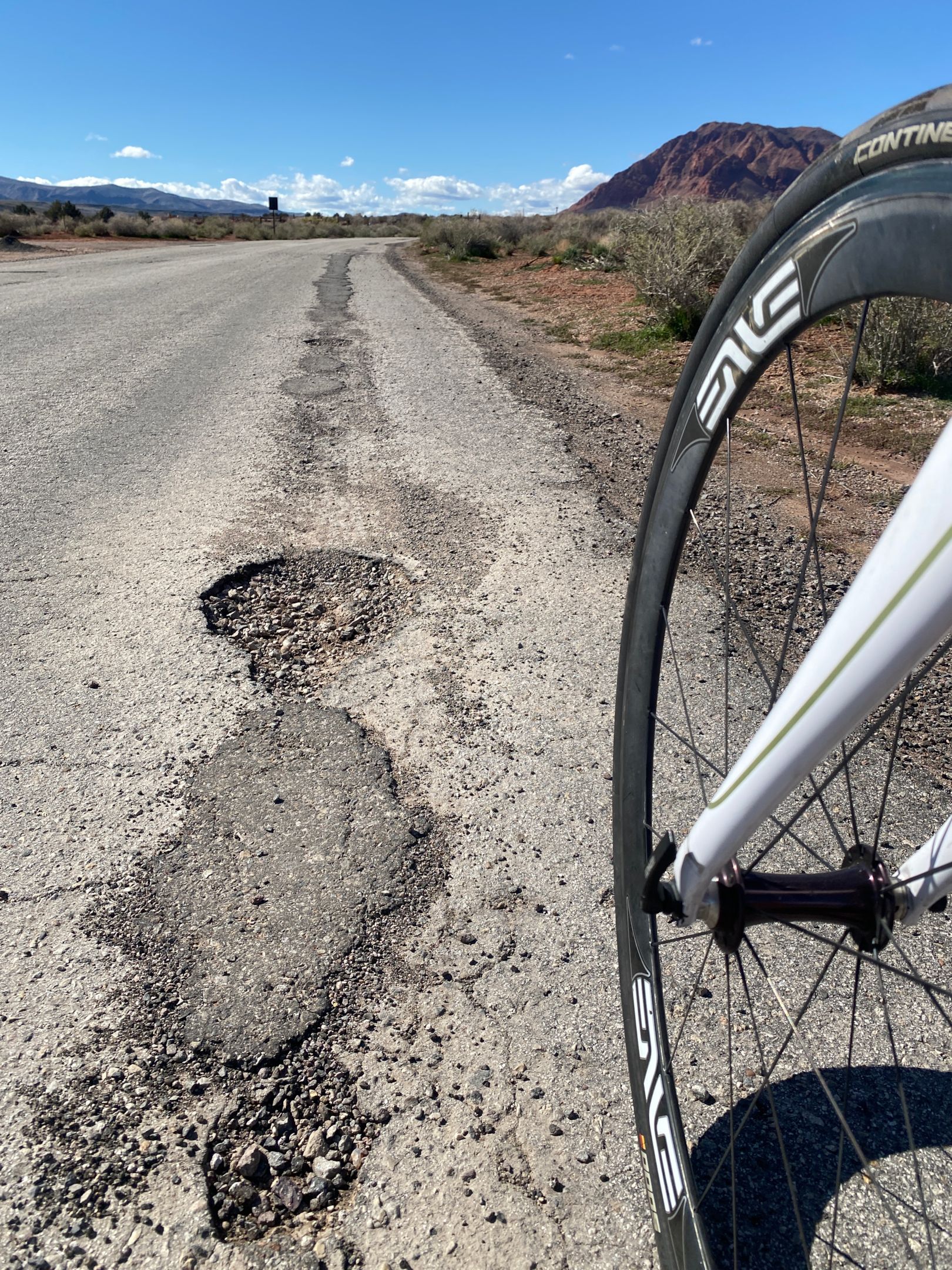
Cycling offers a blend of adventure and exercise, but it also exposes riders to potential dangers, especially on less-than-ideal roads. Recognizing what constitutes an "unsafe road" is key to navigating these challenges safely.
Symptoms of an Unsafe Road for Cyclists:
- Poorly Maintained Surfaces: Potholes, cracks, and uneven pavement can pose significant risks.
- Lack of Cycling Infrastructure: The absence of bicycle lanes or shared paths may increase accident risk.
- High Traffic Volume: Roads with heavy or fast-moving vehicle traffic are more dangerous for cyclists.
- Insufficient Lighting: Poorly lit areas can make cyclists less visible to drivers, especially at night.
- Debris and Obstructions: Loose gravel, branches, and litter on the road can lead to accidents.
- Narrow Lanes: Roads without enough space for cyclists and vehicles to share safely can lead to bicycle accidents.
- Aggressive Driving Areas: Locations known for hostile or inattentive drivers heighten the risk of collisions.
The 8 Most Dangerous Road Conditions for Cyclists
As avid cyclists know all too well, certain road conditions can pose significant risks to their safety. Here are eight common hazards that frequently lead to major bike accidents, along with practical tips for staying safe:
1. Potholes and Road Surface Irregularities:

Potholes, uneven road surfaces, cracks, and bumps can destabilize a bicycle, especially if they're hit unexpectedly or at high speeds.
Prevention Tips:
- Stay Alert: Keep your eyes on the road ahead to spot potholes early.
- Control Speed: Reduce speed in areas known for poor road conditions.
- Use Lights: Equip your bike with front and rear lights to improve visibility.
2. Poorly Marked Bike Lanes:
Faded bicycle lane markings and confusing and can significantly increase the risk for cyclists by creating ambiguity about the right of way. This can lead to close calls or accidents, especially in areas with high traffic volumes.
Prevention Tips:
- Advocate for Infrastructure: Work with local authorities to improve cycling infrastructure.
- Be Visible: Wear high-visibility clothing, especially in areas with poorly marked lanes.
- Choose Safer Routes: Whenever possible, opt for routes with clear and well-maintained bike lanes.
3. Wet or Slippery Surfaces & Inclement Weather:
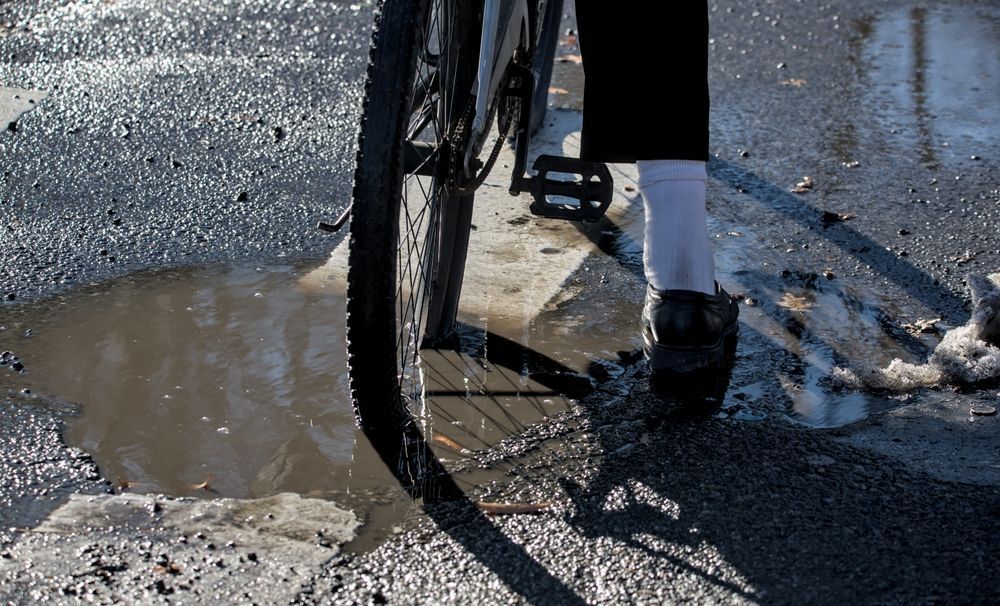
Rain, ice, or oil spills can make road surfaces slippery, reducing a bicycle's traction and increasing the likelihood of skidding and falling.
Prevention Tips:
- Adjust Your Riding Style: Slow down and allow for longer braking distances.
- Wear Appropriate Gear: Ensure you and your bike are visible and well-lit. More than 70% of bicyclist deaths occur due to head injuries. Wearing a helmet, regardless of road conditions is always an important safety measure to take.
- Maintain Your Bike: Use tires suitable for wet or icy conditions and keep them properly inflated. Here are some recommended brands for wet and icy conditions that you can find at local bike shops or online retailers:
- Schwalbe Marathon Winter Plus: These tires are designed for icy roads, featuring a deep tread and carbide spikes to enhance grip.
- Continental Grand Prix 4-Season: A durable tire that performs well in wet conditions, offering good puncture resistance.
- Michelin Power All Season: Known for excellent grip in wet conditions, these tires are designed for year-round use.
4. Gravel or Loose Debris:
Gravel, sand, leaves, or branches on the roadway can cause a bicycle's tires to lose grip, leading to a potential slide and fall.
Prevention Tips:
- Be Prepared: Keep an eye on the road ahead for any signs of loose debris or gravel.
- Choose the Right Path: Avoid the edges of roads where debris tends to accumulate and choose cleaner, clearer paths when possible.
- Control Your Handlebars: Grip your handlebars firmly to maintain control when navigating through loose materials.
5. Railroad Tracks and Grates:
Tracks that run parallel to the direction of travel and metal grates can catch bike tires, causing a sudden stop or fall.
Prevention Tips:
- Cross at Right Angles: Always try to cross tracks and grates at a perpendicular angle to prevent tires from getting caught.
- Slow Down: Approach with reduced speed to safely navigate over tracks and grates.
- Avoid Wet Tracks: Be particularly cautious and avoid tracks when they're wet, as they can be extremely slippery.
6. Construction Zones
Active construction areas often have altered traffic patterns, debris, and uneven surfaces that can be hazardous for cyclists.
Prevention Tips:
- Follow Detour Signs: Adhere to any detour or warning signs and signals around construction zones.
- Be Prepared for Stops: Anticipate sudden stops and slow down when approaching construction areas.
- Stay Visible: Use high-visibility clothing and lights to ensure workers and other vehicles can see you.
7. Narrow Lanes and Obstructions:
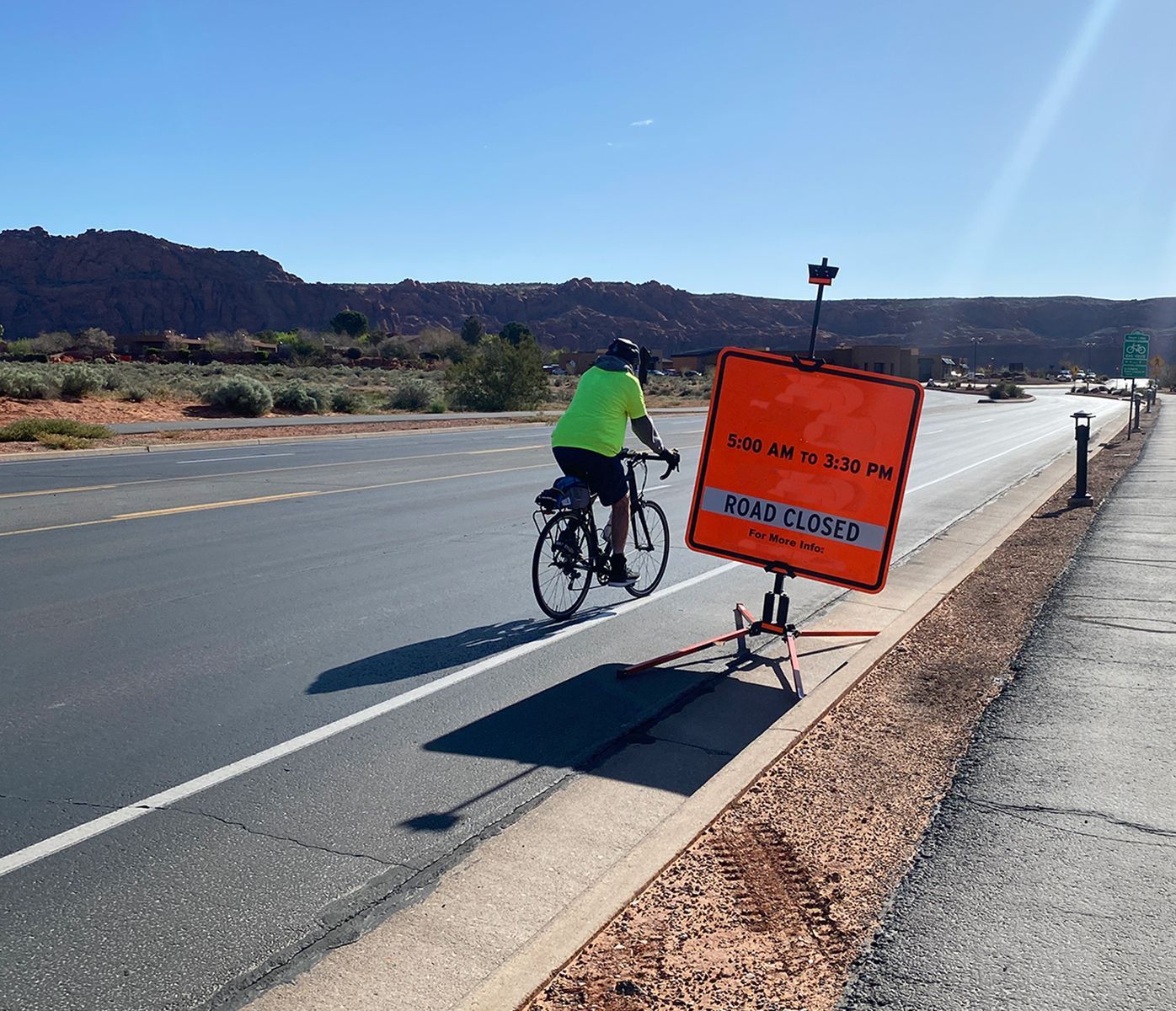
Narrow lanes, parked cars, and temporary obstructions like garbage bins or construction signs can squeeze a cyclist's available riding space, forcing them closer to vehicle traffic.
Prevention Tips:
- Stay Aware of Surroundings: Keep a close watch for opening car doors, pedestrians, and other potential obstructions.
- Use Hand Signals: Always signal your intentions to turn or change lanes early.
- Ride Defensively: Maintain a position in the lane that makes you visible and predictable to other traffic.
8. Lack of Cycling Infrastructure:
With 78% of cyclist fatalities in 2019 occurring in urban areas lacking adequate infrastructure (same source), the need for dedicated cycling spaces is clear. The absence of safe pathways forces cyclists to share roads with fast-moving vehicles, increasing the risk of bicycle accidents.
Prevention Tips:
- Community Action: Join or start initiatives to lobby for better cycling infrastructure.
- Plan Your Route: Use mapping tools to find the safest path with the best infrastructure.
- Stay Informed: Keep up to date with local cycling groups for advice on navigating your city or cycling area safely.
Please note that this list is not exhaustive; there are numerous other types of dangerous road conditions that can lead to bicycle accidents. You must always follow safe riding practices when navigating hazardous areas.

Were you involved in a bicycle accident? If you were, and you suspect unsafe road conditions were a factor, you could be eligible for compensation. Our attorneys at Bike Legal specialize in handling all types of bicycle accident claims, whether it's due to unsafe road conditions or collisions with autos.
The attorneys at Bike Legal offer personal injury representation and work on your behalf to make sure you get the full compensation you deserve. You don't have to do it alone—reach out to us today for expert legal assistance!
Who Is Liable for Unsafe Road Conditions?
Figuring out who's at fault in a bike accident isn't always a simple task, especially when several parties are involved. Depending on the condition of the road, along with several other important factors, the entity responsible for the installation or maintenance of the road may be responsible. Depending upon the circumstances, the cyclist may also bear responsibility for the accident.
Gathering evidence like witness statements, photos, and police reports can help strengthen your case and establish liability. In many cases, unsafe road conditions can be traced back to negligence on the part of the city or municipality responsible for maintaining the area’s roads and trails.
Proving liability in bike accident claims involving unsafe road conditions can be very tricky. It's crucial to the outcome of your case that you work with a qualified attorney who is experienced in these types of claims.
Related: What Happens After A Bicycle Accident?
Psst! At Bike Legal, our bicycle accident lawyers are ready to assist you. We strive to swiftly secure the maximum compensation owed to you. In cases where the liable party refuses to settle, we're prepared to represent you in trial, ensuring your rights are protected.
What About Insurance Coverage?
If you're injured in a bike accident, your insurance policy may cover some of your expenses, like medical bills and bike repairs. Additionally, you may be able to seek compensation from the insurance policies of other parties involved.
To ensure you're maximizing your coverage, review your insurance policy carefully and consider consulting with a legal expert for guidance.
Dealing with insurance companies can be daunting, right? Let our skilled negotiators handle the process for you. At Bike Legal, we'll work tirelessly to secure fair settlements for your damages and injuries, so you can focus on your recovery.
Legal representation
While it's possible to handle a bike accident claim on your own, enlisting the help of an experienced personal injury attorney can significantly increase your chances of success.
A skilled lawyer can assess the strength of your case, negotiate with insurance companies on your behalf, and represent you in court if needed. They can also provide valuable guidance and support throughout the legal process, giving you peace of mind during a challenging time.
Unsure about your rights after a cycling accident? Our experienced attorneys are here to provide you with expert legal guidance and support. From understanding your options to navigating complex cycling laws, we've got you covered.
Statute of limitations
Understanding the Statute of Limitations
Critical Timeframes:
- After a cycling accident, there's a limited period to file a personal injury claim, known as the statute of limitations.
- This period varies by state, ranging from a few months to several years, highlighting the need for swift action.
Why Timing Matters:
- Deadline Awareness: Recognizing the statute of limitations is crucial to safeguard your right to compensation.
- Seek Advice Promptly: Consulting a legal professional soon after your accident ensures you're informed of relevant timelines and processes.
Consequences of Delay:
- Delaying legal action can result in losing your eligibility to claim compensation for injuries and damages incurred due to the accident.
It's crucial to act promptly and seek legal advice as soon as possible to ensure you don't miss the deadline for filing your claim. Waiting too long could jeopardize your ability to seek compensation for your injuries and damages.
Need a bicycle accident attorney? At Bike Legal, we're not just about legal representation—we're committed to making our roads safer for cyclists. Through advocacy and education, we strive to improve cycling safety standards and raise awareness about cyclists' rights among the public and policymakers alike.
Now That You're Aware of These Unsafe Road Conditions...
Remember these key takeaways:
- Stay vigilant for potholes and cracks; they're prime spots for accidents.
- Advocate for better bike lane markings and infrastructure in your area.
- Approach intersections cautiously and assert your right of way when needed.
- Choose routes with ample cycling infrastructure and push for more bike-friendly routes.
- Adjust your riding technique in inclement weather and ensure your bike is equipped with proper lighting.
Cycling brings freedom and adventure, but it's not without risks. By understanding the dangers of unsafe road conditions, you're already taking a proactive step towards safer riding.
Cycling Safety: Ride with Confidence and Legal Support
Now, if you've been involved in a bicycle accident, Bike Legal is here for you.
At Bike Legal, we understand the joys and challenges of cycling. That's why our experienced bicycle accident attorneys specialize in personal injury representation, insurance negotiations, and legal advice tailored to cyclists. We also advocate for safer roads for cyclists.
Bike Legal specializes in helping cyclists navigate legal issues and obtain compensation for injuries sustained in bike accidents. Chat with a bicycle accident lawyer today!
